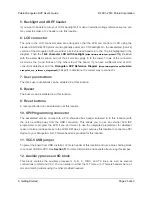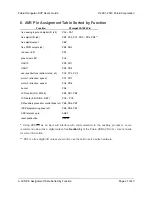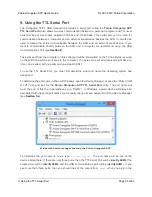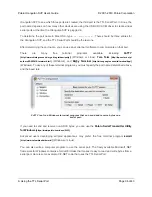
9. Using the TTL Serial Port
The Orangutan SVP’s USB Connection provides a serial port called the
Pololu Orangutan SVP
TTL Serial Port
which allows two-way communication between a personal computer and TTL-level
serial devices at baud rates between 300 bps and 115200 bps. This serial port can be used for
communication between a computer and an external serial device besides the AVR. It can also be
used to debug the serial communication between the AVR and an external serial device. If you
want to communicate directly between the AVR and a computer, we recommend using the USB
Communications Port (see
Section 8
).
The bytes sent from the computer on this serial port will be transmitted on the TX line. Bytes received
on the D/RX line will be sent back to the computer. The bytes are sent and received eight bits at a
time, non-inverted, with no parity and one stop bit (8N1).
To use the TTL Serial Port, you must first determine what port name the operating system has
assigned it.
To determine the port name in Microsoft Windows, open the Device Manager, expand the “Ports (COM
& LPT)” list, and look for the
Pololu Orangutan SVP TTL Serial Port
entry. The port name will
be at the end of this line in parentheses (e.g. “COM4”). In Windows, a given device will always be
associated with the same port unless you manually change its port assignment in the Device Manager
(see
Section 5.a
).
Windows 8 device manager showing the Pololu Orangutan SVP.
To determine the port name in Linux, type
ls /dev/ttyACM*
. The port name will be one of the
devices listed there. If there are only three ports, then the TTL Serial Port will be
/dev/ttyACM2
(the
programmer will be
/dev/ttyACM0
and the USB communications port will be
/dev/ttyACM1
). If you
see more than three ports, then you should look at the output from
dmesg
when you plug in the
Pololu Orangutan SVP User’s Guide
© 2001–2019 Pololu Corporation
9. Using the TTL Serial Port
Page 35 of 43









































